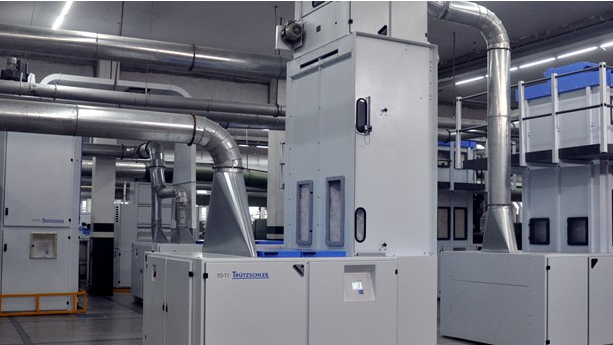Revival Of Italian Silk Industry
Italy’s silk manufacturers are returning from a 40-year sabbatical. They were forced to shut down their spinning mills as they could not face the tough competition from the Chinese market. Recently, luxury designers Valentino and Gucci announced plans to come up with 1,000 silkworm factories.
The return of raw silk production will thrill Italy’s fashionistas who once prided in the country’s 40,000 spinning mills. Over the past year, a hundred companies have begun breeding silk worms in the northern Veneto region as the demand for home-grown silk grows. This calls for a sharp increase in cost of silk from China, the largest silk producer in the world. In 1970, the cost of Chinese silk was £12/kilogram while it cost £16 in Italy. Today, silk exported from China costs £54/kilogram which is marginally less than its price in Italy.
Silk worms and silk rearing techniques went to Europe from Asia in the 12th century. Soon, cities like Lucca, Genoa, Florence and Venice began exporting silk all over Europe to cater to the demands of the rich and famous. However, the two World Wars changed the social and economic status of Europe. Soon after World War II, industrialisation virtually ended the sericulture industry in Italy.
According to trade body Ufficio Italiano Seta, the total export value of Italian finished products was around US$ 975 million in 2012. This mainly included finished fabric, shirts, neckties, dresses and scarves which are made from Chinese silk. Unioncamere (National Union Chambers of Commerce) reports, private enterprises in Italy are still suffering from economic stagnation after two decades and three years of recession. But, recovery is evident. While a few new ventures opened in the first quarter of 2015, closures have dropped drastically.
Till sometime back, there were chances that a silk scarf with a Made in Italy label would actually use silk yarn spun or fabric woven in China. Only the final finishing would have been done in Italy. Things have changed. According to Fernando Pellizzari, President of Association of Silkworm Breeders, “In China, mulberry trees are disappearing as a result of pollution. Now, silk costs €75 (£54.25) per kilo; which means, with our mulberry trees, we are back on track.” Currently, there is high demand for raw Italian silk in the textile industry allowing the Italian silk industry to regain its position in the market.
European countries were lured to produce silk abroad due to cheap labour in Asian countries. However, rising labour costs resulted in the shift to production outside China. The manufacturing costs are still 30 per cent higher in Italy than China. Nevertheless, companies like Piquadro, a leather goods brand, shifted some production to home ground, saving transportation cost and import duty.
Scenario of Global Silk Industry
China, India, Thailand, Japan, Brazil, Vietnam, Uzbekistan, Republic of Korea and Iran are some major silk producing countries. Countries like Kenya, Bangladesh, Egypt, Nepal, Turkey, Malaysia, Romania, Bolivia, Nigeria, Botswana, Zimbabwe and Uganda are involved in cocoon and raw silk production in smaller quantities. The major silk consumers include India, China, United States of America, Italy, France, Switzerland, Japan, Vietnam, United Arab Emirates, United Kingdom, Germany and Korea.
Recently, the labour-intensive sericulture industry has developed in Egypt, Brazil, Bulgaria and Madagascar. Silk material occupies a small percentage of the global textile market which is less than 0.2 per cent though it is produced in more than 60 countries. A majority of silk producers are in Asia. This includes 90 per cent of mulberry silk production and almost 100 per cent non-mulberry silk production.
We buy and sell textile machinery

Leave a Reply
You must be logged in to post a comment.